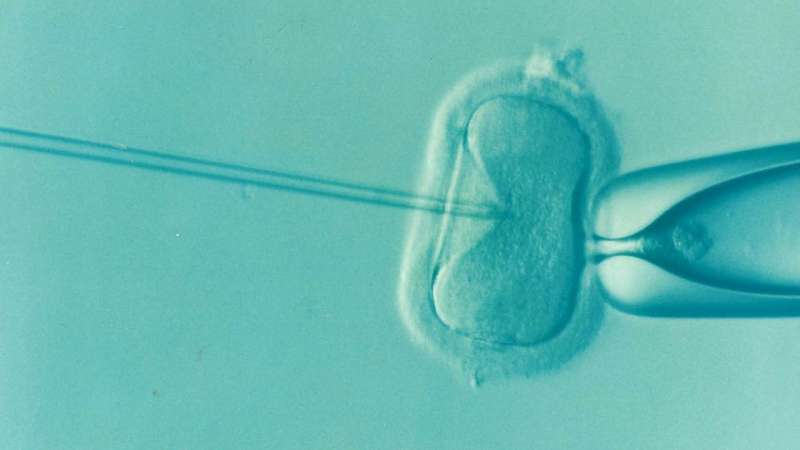This article has been reviewed according to Science X's editorial process and policies. Editors have highlighted the following attributes while ensuring the content's credibility:
fact-checked
trusted source
proofread
A common add-on in IVF may be an expensive waste of time, study reveals

One of the most common add-ons to IVF procedures undertaken in Australia and globally by infertile couples may be a waste of time as well as expensive and invasive, and maybe even reduce the chances of success, according to a report in The Lancet.
The research, by Monash University's Professor Ben Mol in Australia and Dr. Rui Wang and colleagues in China, found that intracytoplasmic sperm injection (ICSI) whereby a single sperm is injected directly into a mature egg—originally developed in 1992 for couples with severe male infertility but which has since expanded in use in more than half of all embryo transfers in Australia and elsewhere.
Over the past 30 years, use of ICSI has increased and now accounts for nearly two thirds of IVF cycles worldwide, including 70% in Europe and North America and nearly 100% in some low-income and middle-income countries.
In 2021, just over 100,000 IVF cycles were performed in Australia and New Zealand resulting in the birth of 20,690 babies, a record high for IVF medical treatments. The proportion of embryo transfer cycles that used embryos fertilized using ICSI was 55.6% in 2021.
However severe male infertility only impacts 30% of couples, "so the use of ICSI far outweighs its original purpose and has been adopted as a general IVF procedures in Australia and globally," he said.
This is the first large, randomized trial looking at the efficacy of ICSI in infertile couples with mild male infertility. The study looked at 10 reproductive medicine centers across China. Couples with infertility with non-severe male factor without a history of poor fertilization were randomly assigned (1:1) to undergo either ICSI or conventional IVF. The primary outcome was live birth after first embryo transfer.
For a three-and-a-half year period from 2018 to 2021, 2,387 couples were randomly assigned to the ICSI group and the remainder to the conventional IVF group.
Live birth after first embryo transfer occurred in 34% of couples in the ICSI group and in 37% of couples in the conventional IVF group. Looking at the total number of babies born from the started cycle taking into account multiple transfers, this difference increased to 45% after ICSI versus 51% after IVF, which was statistically significant.
According to Professor Mol, the study reveals that, in couples with infertility with non-severe male factor, ICSI did not improve live birth rate compared with conventional IVF.
"Given that ICSI is an invasive procedure associated with additional costs and potential increased risks to offspring health, routine use is not recommended in this population," he said.
"The increased use of ICSI in couples with infertility without severe male factor has boomed because of the belief that use of ICSI might increase fertilization success, and now we have shown that this is incorrect."
In addition, there are concerns about ICSI—which is and invasive procedure that bypasses natural selection barriers during the fertilization process. A recent Australian study indicated a small increased risk for genitourinary abnormalities after ART, particularly after ICSI.
"Because a single sperm is isolated and injected into the egg, the natural selection process where a sperm cell beats millions of competitors is bypassed, which may lead concerns regarding potential risks to offspring health, including congenital anomalies," Professor Mol said.
More information: Yuanyuan Wang et al, Intracytoplasmic sperm injection versus conventional in-vitro fertilisation for couples with infertility with non-severe male factor: a multicentre, open-label, randomised controlled trial, The Lancet (2024). DOI: 10.1016/S0140-6736(23)02416-9
















